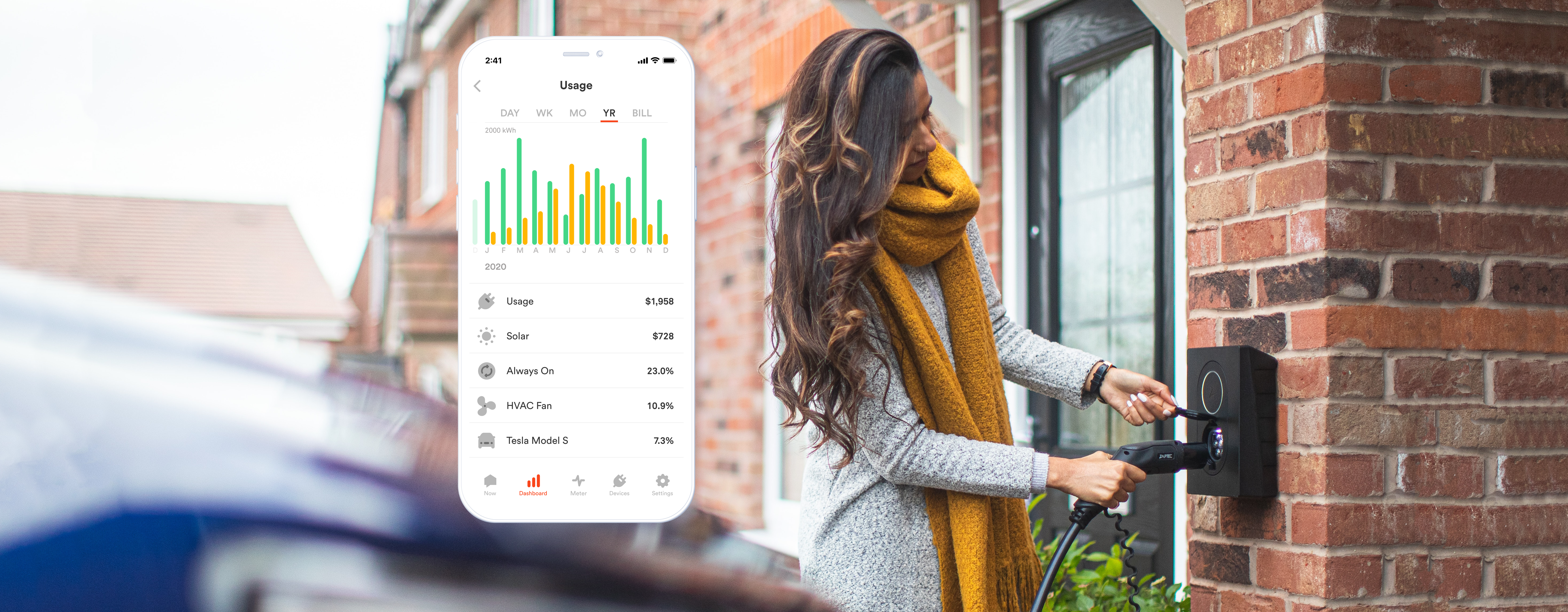When it comes to getting the most out of your solar panels, managing the solar power you make is key to keeping your electricity bills low and reducing your payback period. But knowing how much electricity you’re using throughout your home can feel a little like trying to find a needle in a haystack.
With Sense Solar, you can learn when your home generates the most solar energy, identify energy hogs, and adjust when and where you use energy in your home to make the most out of your solar system. Here are four tips on how you can use Sense Solar to monitor and manage your energy usage.
1. Track Production and Use in Real-Time
Sense provides a real-time view of the solar power you’re making and using right now. Some guides will say just to use one high-wattage appliance at a time, but with Sense, you can see exactly how much energy you’re using in your home.
Because of Sense’s real-time technology, you can identify which appliances or systems use the most electricity and adjust when you’re using them to make the most out of your solar system. For example, if you see that you’re producing solar energy near your system’s maximum capacity, and your washer and dryer use the most energy, then you’ll want to do your laundry during peak production times.
How It Works
To use Sense Solar to monitor your energy production in real-time, follow these steps:
- Track which appliances and systems use the most electricity throughout the day through Sense.
- Look at your solar system’s real-time energy production.
- Then, adjust your energy use as your solar system produces the most electricity.
2. Look at Short-Term and Long-Term Trends
In addition to acting in the moment, you can use Sense to see your historical production and usage and plan your activities moving forward.
Let’s say you create a monthly goal to use a set amount of energy from the grid, a certain amount of solar energy, and a set amount of total energy from both the grid and your solar panels, but you’re trending behind. Or, perhaps you set a goal of using only as much energy as your solar system produces.
With your goals in mind, you can aim to use more devices when the sun is up. If possible, do that laundry during the day. Pre-cool your home mid- or late-morning when your solar production is really starting to ramp up.
How It Works
Make the most out of your monthly or yearly goals by trying out these tips:
- Look at Sense’s monthly or yearly breakdown of your solar energy production. Overall, which months of the year generate the most electricity in your household? You can use this data to adjust your energy consumption and decrease energy usage when solar energy production trends are low.
- Compare your energy usage to identify appliances and systems that use the most energy overall: By looking at long-term trends, you can see which appliances and systems consistently use the bulk of your energy. While a washer and dryer may use more energy in real-time, you may find that your HVAC system or water heater is the biggest source of energy consumption overall.
3. Estimate the Impact of Capital Improvements
Is your air conditioner an energy hog? Have you been thinking about upgrading to a heat pump? Sense Solar can help measure your current air conditioner use so you can compare it to the average consumption of a heat pump. The same goes for any appliances or systems in your home. From your refrigerator to your washer, to your dryer to your water heater, knowing exactly how much energy they use can help you determine if you need to upgrade to a more energy-efficient unit.
How It Works
Deciding whether or not to upgrade an appliance or home system requires some research, so follow these steps to help you make energy-efficient decisions.
- Go into the Sense Home app to track short-term and long-term trends.
- Identify areas of high energy consumption.
- Look at how many kilowatt-hours high-energy appliances and systems use per month or year.
- Compare the number of kilowatt-hours to that of a new system.
- Replace old appliances and systems with energy-efficient systems, like Energy Star-certified appliances, heat pumps, or tankless water heaters.
- If you have new and efficient appliances, consider increasing the number of solar panels in your system if you see that you’re not producing enough energy to support your home’s energy consumption.
4. Remember, Your Solar Isn’t Limitless!
Maintaining energy-efficient habits is another way to make sure you produce more than you use. Studies have shown a “solar rebound” where consumption increases by 28.5% on average when users adopt solar panels.
To avoid increasing your energy consumption after installing solar panels:
- Keep an eye on your energy consumption by using Sense Solar.
- Compare your energy consumption from before you installed a solar panel system by looking at old energy bills and comparing them to your data inside Sense.
- Decrease energy consumption if you see that you’re accidentally consuming more energy after installing solar panels and haven’t made any changes to your lifestyle.
